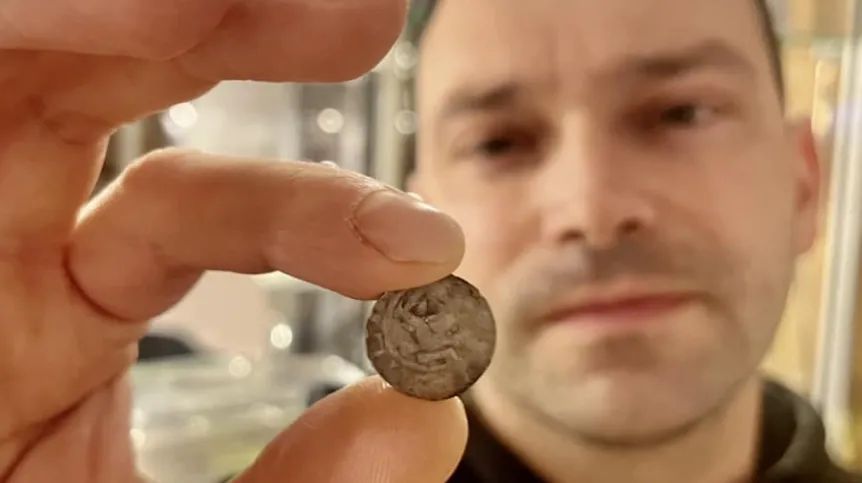
A silver Otto Adelheid Pfennig was found near Kamień Pomorski. These coins were characterized by high quality silver and precise workmanship. They are among the most interesting numismatic relics discovered in Poland, the Museum of the History of the Kamień Land reports.
The coin was discovered by Damian Tomczyk, a member of the St. Cordula Association, during a legal metal detector search.
The discovered relic is an Otto Adelheid Pfennig with a motif of a chapel and a cross. Coins with these symbols 'were an expression of the idea of imperial universalism" of Otto III (983-1002), who sought to unite the Christian West under his leadership, we read in the museum's release.
Early medieval cross coins, including the famous Otto Adelheid Pfennigs, are 'among the most interesting numismatic artefacts discovered on Polish soil', the museum representatives emphasise.
As the experts explain, Otto Adelheid Pfennigs, commemorating one of the emperors of the Holy Roman Empire, were characterized by high quality silver and precise workmanship, which made them a valued currency in Central and Eastern Europe. However, they were not only a means of payment, but also a symbol of prestige and diplomatic contacts, including those of the Piast dynasty, with the empire. Archaeologists find them in strongholds such as Wolin, Poznań or Gniezno, as well as in more distant places, where they could have been used by the local population.
“'The discovered coin is distinguished by a coherent iconographic program that combined religious and political symbolism', the museum reports. The obverse of the coin features a cross in the central part, which is an expression of the sacral foundations of imperial power and emphasizes the Christian nature of Otto III's rule and his idea of a universalist empire in which secular and spiritual power cooperate.
On the arms of the cross are the letters ODDO, which is a form of the name Otto, and the inscription around the rim DI GRA REX, which can be expanded as Dei Gratia Rex (Latin: "by the By the Grace of God, King"). The reverse shows a chapel, which could symbolize the Church, reliquaries or places of worship, while emphasising the close connection of the emperor to Christianity. The inscription ADELHEIT around the rim refers to Queen Adelaide of Burgundy, the wife of Otto I and grandmother of Otto III.
'Coins with a chapel and a cross were carriers of the ideology of Christian imperial power. The chapel symbolized holiness, and the cross - the triumph of Christianity and universal values that Otto III wanted to instil in the territories under his control', we read in the press release.
Otto Adelheid Pfennigs are not the only coins of this type discovered in Poland. Coins of other German emperors, as well as Anglo-Saxon denarii, Arab dirhams and Czech denarii, also often appear in numismatic treasures. The inscriptions, combined with the iconography of the chapel and the cross, made these coins specific 'carriers of ideology' and political propaganda that circulated throughout Europe, the museum experts explain. (PAP)
PAP - Science in Poland
ekr/ bar/













